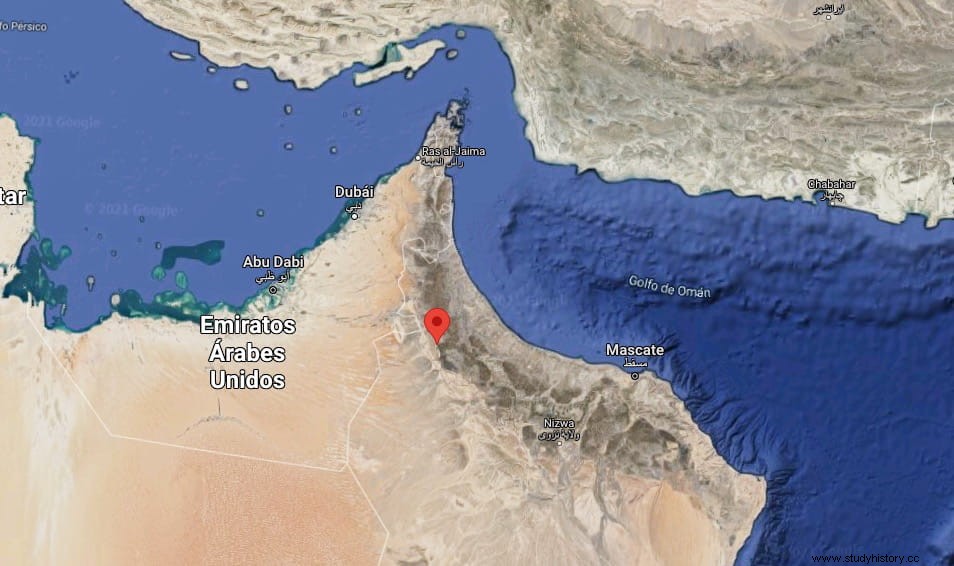At the end of December, another season of archaeological work concluded in the Qumayrah Valley, in the north of Oman. Archaeologists there identified another tower in a Bronze Age settlement, unearthed evidence of copper smelting, and discovered a 4,000-year-old game board.
The excavations are jointly led by Professor Piotr Bieliński, from the Polish Center for Mediterranean Archeology at the University of Warsaw (PCMA UW), and Dr. Sultan al-Bakri, Director General of Antiquities at the Sultanate's Ministry of Heritage and Tourism (MHT). from Oman. They investigate development and settlement patterns in one of the least studied corners of Oman:the northern mountain valleys of the Hajar range.
In the current season, the Bronze Age and Iron Age II Umm an-Nar phase settlements near the village of Ayn Bani Saidah were the main focus of the team's work. – Ayn Bani Saidah is strategically located at a crossroads of routes connecting Bat in the south, Buraimi and Al-Ayn in the north, and the seacoast near Sohar in the east. Along this route there are some important sites from the Umm an-Nar period. So we expected that our deposit would also be in the same league , – explains Professor Bieliński.

The latest discoveries prove archaeologists right. – The settlement is exceptional for including at least four towers:three round and one angular. One of the round towers had not been visible on the surface despite its large size of up to 20 meters in diameter. It was only discovered during excavations , – says Dr. Agnieszka Pieńkowska from PCMA UW who is analyzing the Bronze Age remains within the project. – The function of these prominent structures present at many sites in Umm an-Nar has yet to be explained , – Add it.
But new discoveries have also been made in other Bronze Age buildings. – We have finally found evidence of copper working at the site, as well as some copper artifacts. This shows that our settlement participated in the lucrative copper trade for which Oman was famous at the time, with mentions of Omani copper present in Mesopotamian cuneiform texts , – says Professor Bieliński.

But the most unexpected discovery is not directly related to economics or subsistence. – In one of the rooms we found… a game board! – says the project manager. The board is made of stone and has marked fields and holes for glasses. Games based on similar principles were played during the Bronze Age in many economic and cultural centers of that time. – These finds are rare, but several examples are known from India, Mesopotamia, and even the eastern Mediterranean basin. The most famous example of a game board based on a similar principle is that of the tombs of Ur , – explains the archaeologist.
In the coming year, the team will continue to work in the Qumayrah Valley, both at Ayn Bani Saidah and at Bilt, at the other end of the valley, where more remains of Umm an-Nar are found.

The investigated area, the Qumayrah microregion, is a mountainous valley that stretches from Bilt in the northeast to Ayn Bani Saidah in the southwest. During the first excavations, carried out since 2015, the valley turned out to be very rich in archaeological remains from at least five archaeological periods. Archaeologists discovered that human settlement was present in Ayn Bani Saidah from the late Neolithic (around 4300-4000 BC).
And in both Ayn Bani Saidah and Bilt, tombs and settlements from the Umm an-Nar period (ca. 2600-2000 BC) have been found. Additionally, the remains of an Iron Age II (c. 1100-600 BC) settlement sprawling across the stone hills near Ayn Bani Saidah have turned out to be several times larger than initially thought. Archaeologists have also documented the ruins of a village from the late Islamic period that sits on top of earlier remains. – This abundance of settlement traces shows that this valley was an important place in Oman's prehistory, – says Professor Bieliński.
